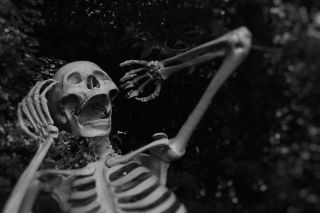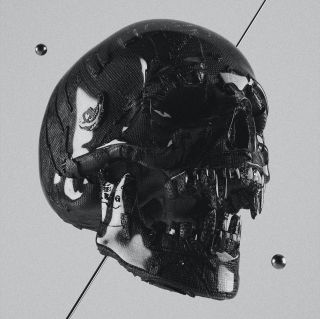Cognition
How We View the Minds of the Dead
We assume that mind and brain are separate. Does death separate them further?
Posted March 19, 2023 Reviewed by Abigail Fagan
Key points
- Throughout the world, cultures honor the dead in very different ways.
- Examining this through the lens of social psychology, our default, dualistic assumptions have a direct influence.
- We naturally assume that mind and brain are separate entities. This leads to "conservation of mind" and underlies the important role of culture.
Imagine a life where you never have to lift a finger. Everything is done for you. People come and offer you food and drinks, change your clothes, and entertain you with stories for hours. And then, once a year, you're dressed up in fancy attire and paraded around town. This might sound like a pretty great life. Except that it's not a life at all. You're dead.
The above describes the elaborate death ritual of The Torojan people of Indonesia. When a family member dies, the corpse remains in the house for many months, and using local techniques, it slowly becomes mummified. All the while, family members treat the corpse as if it is still alive: offering drinks and engaging in daily conversations.
The body can remain in the house for months, or even years, while the family saves up enough money for the public funeral.
Then each year, during a tradition called ma'nene', the corpses are exhumed, cleaned, dressed up in clothes, and carried around the town. Relatives will often take pictures of themselves with the mummified bodies of their loved ones.
On one level, these practices sharply contrast modern Western traditions. But on a deeper level, many unifying themes come to light when we take a closer look at these practices through the lens of social psychology. How do people represent the deceased in their own minds? And how does the presence of the body, as in the case of these rituals, influence this process of mentalization?
Death Through The Lens of Social Psychology
Death is a fact of existence, and a realization of our own mortality is a defining feature of the human experience. Yet, throughout time and place, different cultures approach this fact in very different ways.

It's interesting how death is examined across different communities, and how rituals, like the ones described above, allow its living members to cope and co-exist with these losses. But examining the Torojan death rituals, in particular, also provokes a broader inquiry about how the brain represents the deceased.
This may seem like an odd topic. But just as we perceive the mind of the person, very much alive, sitting across from us, we also perceive the mind of the dead.
While alive, our loved ones are vivid, red-blooded, three-dimensional fellow humans. After they pass away, we know what they were like, but when we imagine them, they feel like abstract shadows of their former selves. What's happening here? And does the mere ability to see their physical bodies, as in the case of the Toroja, make them seem more real to us?
To understand how we represent the deceased, we first need to see how we represent the living. This comes down to social psychology, and in particular social cognition. This is the general process by which our brains create models of other people: their actions, beliefs, motivations, and consciousnesses. We can only ever encounter our own inner experience, but we automatically develop estimates for the inner experiences of others.
Work with fMRI and other neuroscience tools has found that specific brain regions, such as the medial prefrontal cortex (mPFC), play a particularly strong role in this modeling process. Some evidence even suggests that the same regions of the mPFC involved in thinking about yourself, are also active in your closest friends when they think about you.

Specific neural mechanisms aside, most pressing for the current conversation is that this modeling process is precisely that: a model. It's an estimate of another person's inner experience; therefore, the brain must make intelligent assumptions. If we see a person at the metro station carrying a large suitcase, staring at their phones in confusion, we quickly surmise that they're a lost, frustrated tourist. If a person is smiling, we naturally assume they're happy.
Of course, we could easily be wrong about these, but the brain quickly forms these best guesses.
Equating a grimace with frustration, or a smile with happiness are simple assumptions. But there's a much larger, more foundational assumption at the heart of social cognition: That the mind is separate from the brain.
And it turns out that this carries immense consequences for representing the minds of the dead.
Dualism and Conservation of Mind
The idea that the mind is separate from the brain is known as dualism. It's a philosophical position pioneered by the French thinker Rene Descartes in the 1600s. Dualism is the idea that the mind — all of our personhood, tastes, humanity, uniqueness, etc. is distinct and separable from the body. In this view, the body is a mere vessel for the mind.

The dualist view leaves open the possibility that when the body dies, the mind persists, a phenomenon known as conservation of mind. Many religions and cultures, including the Tarojan, have spiritual beliefs consistent with this idea.
Whether in "heaven" or another version of the afterlife, the soul can persist beyond the constraints of the physical body.
The idea of dualism has powerful, intuitive appeal, and assuming it may be a component of human nature. As developmental psychologist Paul Bloom has remarked, "we're all common sense dualists."
Research in developmental psychology supports the idea that dualism is our default position. Experiments with young children raised in a secular environment find strong evidence for dualistic beliefs: They naturally assume that the mind persists when the body no longer does.
In a clever set of experiments by Jesse Bering, they provided kindergarteners with a series of questions about the following scenario:
There's Mr. Alligator hiding behind those bushes. And here comes Brown Mouse. Brown Mouse doesn't see Mr. Alligator. And Mr. Alligator doesn't see Brown Mouse yet. Brown Mouse is having a very bad day. First of all, he's lost! He has no idea where he is or how to get home. . . . And he's very hungry and thirsty because he hasn't had anything to eat or drink all day. Uh-oh! Mr. Alligator sees Brown Mouse and is coming to get him! [Mr. Alligator eats Brown Mouse.] Well, it looks like Brown Mouse got eaten by Mr. Alligator. Brown Mouse is not alive anymore.
Upon questioning, the kids' responses relayed a strongly dualist stance. Spirits can still "feel", but they don't get "hungry". They believed that while mental states like emotions persisted, physical states like thirst and hunger ceased.
Dualism appears to be the default assumption, leading directly to the conservation of mind.
How do these psychological phenomena interact with cultural tradition and spiritual practices, such as those of The Torojan? Find out in the next piece in this series, The Psychology of Death Rituals
This piece also appears on the human nature blog, NeuroScience Of.
References
Bloom, P. (2004) Descartes’ Baby: How the Science of Child Development Explains What Makes Us Human (New York: Basic Books, 2004).
Chavez, R.S. (2021). Tangled representations of self and others in the medial prefrontal cortex. In Ochsner, K. & Gilead, M. (Eds.), The Neural Bases of Mentalizing. Springer Press.
Chavez, R.S. & Wagner, D.D. (2020). The neural representation of self is recapitulated in the brains of friends: A round-robin fMRI study. Journal of Personality and Social Psychology, 118(3), 407-416.
Gray, K., Knickman, T. and Wegner, D. (2011) “More Dead Than Dead: Perceptions of Persons in the Persistent Vegetative State,” Cognition 121 (2011): 275–80..
Smitri, D. (May, 2022) What the extraordinary funeral rituals of Tana Toraja and Trunyan in Indonesia can teach us about living a better life, ABC RN
Sayoga, P. (Dec, 2020) In Indonesia, a Blurred Boundary Between The Living and The Dead, The New York Times




